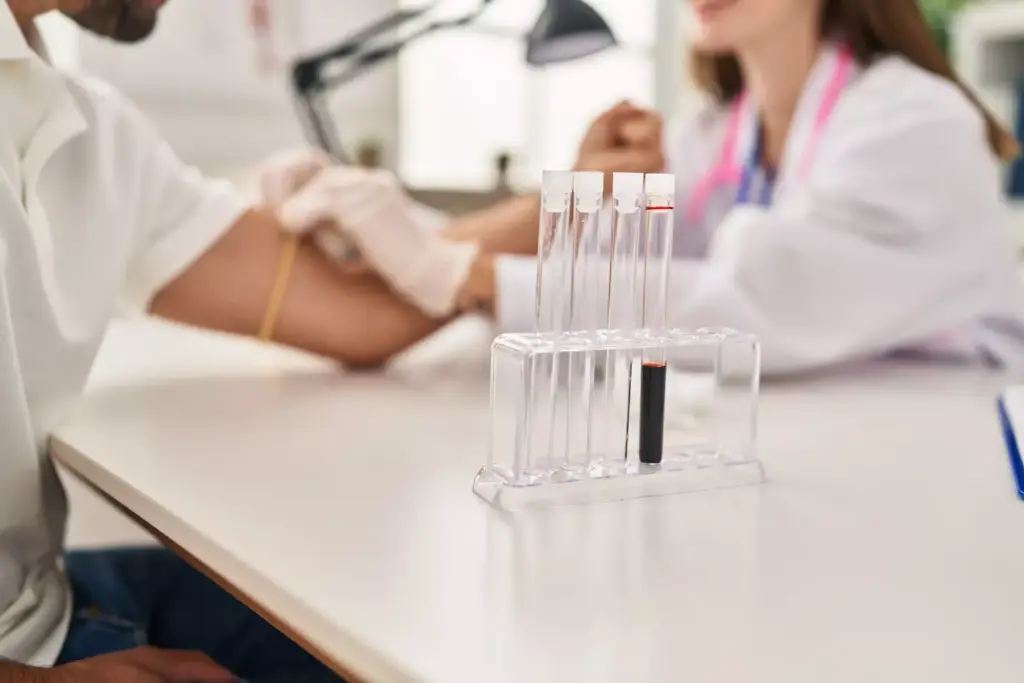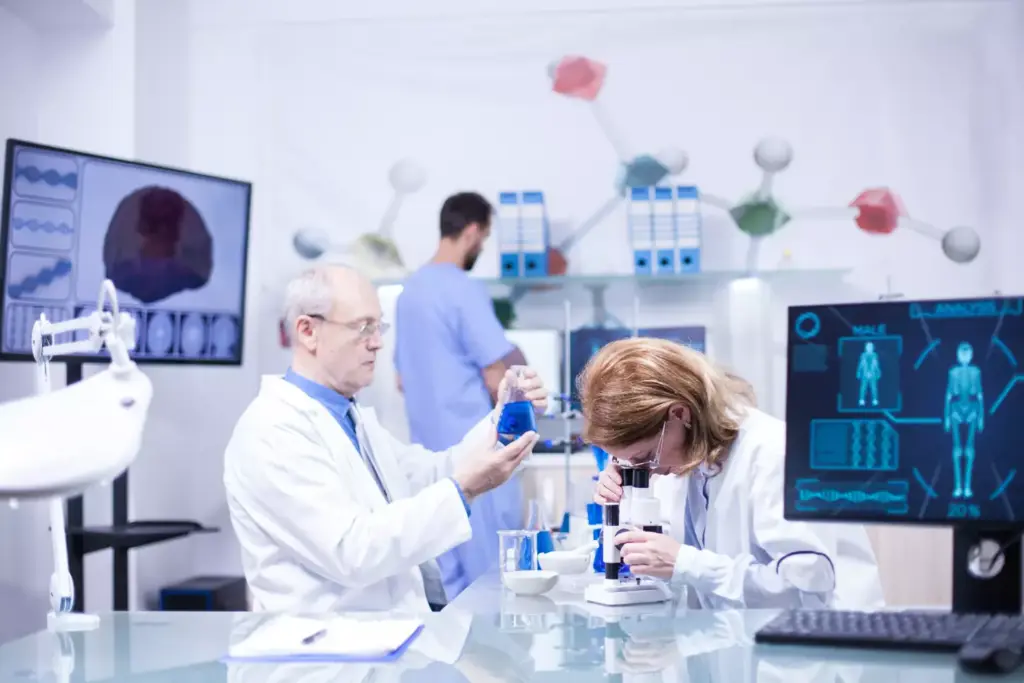Last Updated on November 27, 2025 by Bilal Hasdemir

Patients with few options are now hopeful thanks to experimental cancer treatments. At Liv Hospital, we aim to give access to new therapies that meet global standards and ethics. Our team helps patients navigate the complex process of getting these treatments.
The ‘right to try‘ law lets some patients with serious illnesses try promising therapies outside of clinical trials. This is a big step for those looking for different treatment options.
Key Takeaways
- Understanding the current state of experimental cancer treatments.
- The role of ‘right to try’ laws in accessing innovative therapies.
- Eligibility criteria for patients to access experimental treatments.
- The importance of international standards in cancer treatment.
- How Liv Hospital supports patients in navigating these options.
What Are Experimental Cancer Treatments?
Experimental cancer treatments are at the forefront of cancer research. They offer hope to those who have tried everything else. These treatments are not yet fully approved by the FDA.
Definition and Current Development Status
These treatments include immunotherapies, targeted therapies, and gene therapies. They are being tested for treating different cancers. Right now, they’re in clinical trials to check if they’re safe and work well.
The progress of these treatments varies. Some show great promise in early trials. Others are closer to getting FDA approval.
The Critical Role of Drug Supply Trials
Drug supply trials are key in developing these treatments. They look at how well the treatment works and if it’s safe. By studying how the drug acts in the body, researchers learn about its benefits and risks.
This information is vital for deciding if a treatment can move forward. It helps figure out if it should get FDA approval.
Drug supply trials are essential in cancer research. They help make sure only safe and effective treatments are used.
The Right to Try Act: A Lifeline for Terminal Cancer Patients
The Right to Try Act is a hope for those with terminal cancer. It lets them try experimental drugs not yet approved by the FDA. This law has become more known as a last resort for those who’ve tried everything else.
Origins and Purpose of the Legislation
The Right to Try Act was made to help terminally ill patients. It lets them try treatments that aren’t fully approved by the FDA yet. This is for those with no other treatment options left.
This law’s main goal is to give patients access to experimental treatments when all else fails. Patients and doctors must have tried all approved treatments and can’t join clinical trials. They must also give their informed consent.
How the Federal Law Works in Practice
The Right to Try Act lets patients try treatments after Phase 1 trials but before FDA approval. We help patients and doctors through this process. We make sure they meet all the needed criteria.
To qualify, patients must have a serious illness and can’t join clinical trials. Doctors are key in this by confirming patients meet the criteria and providing the needed documents. It’s important for patients and doctors to discuss this option carefully.
Right to Try vs. Compassionate Use: Understanding the Differences
For those with terminal illnesses, knowing the difference between ‘Right to Try’ and ‘Compassionate Use’ is key. Both offer access to unapproved treatments, but they have different rules and application processes.
Regulatory Oversight Comparison
The ‘Right to Try’ law lets eligible patients try certain treatments without FDA approval. This means they can skip some rules. On the other hand, ‘Compassionate Use’ programs also offer access to new treatments. But, they have more regulatory oversight.
A report on healio.com says the FDA is key in ‘Compassionate Use’. They make sure treatments are safe.
Application Processes and Timeline Differences
The ‘Right to Try’ application is simpler than ‘Compassionate Use’. ‘Compassionate Use’ needs more detailed FDA submissions. This makes it slower.
‘Right to Try’ was made to be quicker. But, it also needs a doctor’s confirmation and proof of eligibility.
It’s vital for patients and doctors to understand these differences. This helps them make better choices about experimental cancer treatments.
Who Qualifies for Right to Try Cancer Treatments?
For patients with terminal illnesses, knowing who can use Right to Try is key. The Right to Try Act aims to help those with few treatment options get experimental therapies.
Specific Eligibility Requirements
To get Right to Try cancer treatments, patients must meet certain eligibility requirements. These include:
- Having a serious or immediately life-threatening condition
- Having tried all approved treatments
- Being unable to join or access clinical trials
Patients also need a physician’s recommendation and must give written informed consent. This makes sure they understand the risks and benefits of the experimental treatment.
Physician Certification and Documentation
Physician certification is a big part of applying for Right to Try. The doctor must say the patient fits the criteria and could benefit from the treatment. They need to provide:
- Medical records showing the patient’s diagnosis and treatment history
- A statement saying the patient is eligible for Right to Try
- Details about the experimental treatment
Requiring physician certification helps ensure patients get advice from doctors when looking for new treatments.
Accessing Experimental Cancer Treatment Through Clinical Trials
For patients with advanced cancer, clinical trials offer a key chance for new treatments. Finding your way through the complex world of clinical trials can seem tough. Yet, it’s a promising path for innovative care.
Finding Appropriate Clinical Trials
Patients can look for clinical trials on databases like the National Cancer Institute’s or ClinicalTrials.gov. These sites give detailed info on trials, like who can join and where they are. It’s best to work with your doctor to find trials that fit your needs and health history.
Key resources for finding clinical trials include:
- National Cancer Institute’s database
- ClinicalTrials.gov
- Cancer support organizations and advocacy groups
Understanding Trial Phases and Patient Selection
Clinical trials go through phases, each with its own goals. Phase I trials check safety and dosage, Phase II trials look at how well the treatment works, and Phase III trials compare it to current treatments. Who can join a trial depends on their cancer type, stage, past treatments, and health. Knowing these criteria helps figure out if you’re eligible for a trial.
By joining clinical trials, patients can try new treatments that might lead to better results. We’re here to help patients through this journey, guiding them through the complex world of clinical trials.
The FDA’s Accelerated Approval Pathway for Cancer Drugs
The FDA’s accelerated approval pathway has been key in getting new cancer treatments to patients fast. It allows for drugs that meet big medical needs, like serious or life-threatening conditions. This quick review process means patients get new treatments sooner.
How Accelerated Approval Works
The pathway is for drugs that treat serious conditions and meet a big need. A drug must show a clear benefit over current treatments. The FDA looks at surrogate endpoints like response rate or survival without disease progression. This fast check lets patients get treatments that could save their lives sooner.
Dr. Richard Pazdur, a top oncologist and former FDA director, said, “The accelerated approval pathway is key in getting new treatments to patients with serious diseases.” This shows how vital this pathway is for cancer care.
Recent Success Stories in Cancer Treatment
In recent years, the FDA’s pathway has led to big wins in cancer treatment. For example, immunotherapies like pembrolizumab and nivolumab have been approved for melanoma and lung cancer. These treatments have greatly improved patient outcomes and life quality.
“The approval of these immunotherapies is a big step forward in fighting cancer,” said Dr. Jedd Wolchok, a leading oncologist. “By giving patients new treatments, we can increase survival rates and save lives.”
Other recent approvals include targeted therapies for specific genetic mutations. This shows the ongoing innovation and progress in cancer treatment. As research keeps moving forward, the FDA’s pathway will keep bringing new, effective treatments to patients.
Breakthrough Experimental Cancer Treatments on the Horizon
The fight against cancer is on the verge of a major breakthrough. New therapies are showing great promise. These advances come from a deeper understanding of cancer biology.
In recent years, oncology has made big strides. This is thanks to cellular and immunotherapies. These treatments are showing great results in trials, giving hope to cancer patients.
Cellular Therapies and Immunotherapies
Cellular therapies, like CAR-T cell therapy, are powerful against cancer. They use the patient’s immune cells to attack cancer cells. Dr. Carl June, a pioneer in CAR-T cell therapy, noted that it has changed the game for some blood cancers.
Immunotherapies, including checkpoint inhibitors and vaccines, boost the body’s fight against cancer. They have shown great promise in trials. For example, a study in the New England Journal of Medicine found they improved survival in advanced melanoma patients.
Targeted Molecular and Genetic Approaches
Targeted molecular and genetic therapies are also being explored. They aim to hit cancer cells hard while sparing healthy ones. PARP inhibitors, for instance, are effective against certain cancers with BRCA mutations.
Gene editing, like CRISPR/Cas9, is being looked at for cancer treatment. It could edit genes involved in cancer.
“The precision and efficiency of CRISPR/Cas9 make it an attractive tool for cancer therapy,”
according to
These new treatments mark a significant step forward in cancer research. While there are hurdles to overcome, the progress is a testament to the hard work of researchers and doctors.
Weighing Benefits and Risks of Experimental Treatments
Choosing to try experimental cancer treatments means looking at the good and the bad. We’re always finding new ways to fight cancer. It’s key to know what these treatments can do and what might go wrong.
Potential Therapeutic Advantages
Experimental treatments might lead to improved survival rates and a better quality of life. A study from the University of Pennsylvania showed benefits for those in clinical trials. One patient said, “The trial gave me hope when I thought all was lost.”
“The benefits of experimental treatments are big, but we must think about the risks too.”
These treatments offer hope to those who’ve tried everything else. By joining clinical trials, patients get new treatments and help science move forward.
Understanding Safety Concerns and Unknowns
Even with promise, experimental treatments have safety concerns and unknowns. Patients might face unexpected side effects or issues with other treatments. It’s vital for patients and doctors to talk about these risks and watch for them closely.
Also, we don’t know everything about the long-term effects of these treatments. This is why careful patient selection and ongoing monitoring in trials are so important.
By knowing both the good and the bad, patients can make better choices. As these treatments get better, research and talking openly will help us understand them better.
Financial Reality: Costs and Coverage of Experimental Cancer Treatments
Experimental cancer treatments offer new hope for patients. But, their financial impact can be big. It’s key for patients and their families to understand this.
The cost of these treatments is a big worry. Insurance coverage is very important in this area. But, insurance policies vary in what they cover for these treatments.
Insurance Coverage Limitations
Insurance for experimental cancer treatments can be limited. Many insurers see these treatments as “investigational.” Patients might need to appeal or look for other insurance. For more info, visit https://int.livhospital.com/what-is-needed-for-stem-cell-therapy/.
Patient Assistance Programs and Resources
There are programs and resources to help with costs. Pharmaceutical companies, non-profits, and government programs offer help. Patients should talk to their doctors about these options.
It’s vital for patients to know the financial side of experimental treatments. By looking into insurance and assistance programs, they can handle the financial challenges better.
Ethical Considerations in Experimental Treatment Access
Dealing with cancer treatment is tough. We face big challenges when we talk about experimental therapies. We must think about the right way to give people access to these treatments.
Patient Autonomy vs. Protection Perspectives
The ‘right to try’ law has sparked debate. Some say patients should decide their own treatment paths, including trying new therapies. Others think we need rules to keep people safe from treatments that might not work.
“The most important thing is to preserve the patient’s autonomy while ensuring their safety.” This quote shows the big ethical question. We need to balance giving patients freedom with keeping them safe from harm.
Impact on Standard Research and Clinical Trials
Letting more people try new treatments can change research and trials. It’s key to think about how this affects research quality and the chance to test new treatments.
Dr. Jane Smith says,
“Expanded access programs can sometimes divert resources away from controlled clinical trials, potentially slowing the development of new treatments.”
This shows we need a fair way to balance patient needs with research goals.
Looking closely at these issues helps us create a better system for getting new cancer treatments.
Conclusion: Navigating the Complex Landscape of Experimental Cancer Treatment Access
Getting access to experimental cancer treatments is a tough journey. We’ve looked into the Right to Try Act, the differences between Right to Try and Compassionate Use, and the role of clinical trials. These are key to getting new treatments.
It’s vital to work together as patients, doctors, and researchers. This way, we can make sure patients get the best treatments. It also helps us move forward in cancer research.
The world of experimental cancer treatments is always changing. New discoveries and treatments keep coming. We must keep focusing on giving patients the best care. And we need to support the growth of new treatments too.
References
- Cancer Research Institute. (2025, April). 2025 Cancer Immunotherapy Insights + Impact Report. Retrieved from https://www.cancerresearch.org/blog/cancer-immunotherapy-insights-impact-2025-report Cancer Research Institute+1
- Motolani, A. (2025, July 21). Top oncology innovations that shaped the first half of 2025. Cancer News – Binaytara. Retrieved from https://binaytara.org/cancernews/article/top-oncology-innovations-that-shaped-the-first-half-of-2025 Binaytara
- AACR. (2025). Cancer in 2025. In Cancer Progress Report 2025. Retrieved from https://cancerprogressreport.aacr.org/progress/cpr25-contents/cpr25-cancer-in-2025/ Cancer Progress Report
- Wagle, N. S., Nogueira, L., Devasia, T. P., Mariotto, A. B., Yabroff, K. R., Islami, F., Jemal, A., Alteri, R., Ganz, P. A., & Siegel, R. L. (2025). Cancer treatment and survivorship statistics, 2025. CA: A Cancer Journal for Clinicians, 75(4), 308–340. https://doi.org/10.3322/caac.70011 ACS Journals+2PubMed+2
- American Cancer Society. (2025). Cancer Facts & Figures 2025. Retrieved from https://www.cancer.org/research/cancer-facts-statistics/all-cancer-facts-figures/2025-cancer-facts-figures.html News-Medical
FAQ
What are experimental cancer treatments?
Experimental cancer treatments are new ways to fight cancer. They are being tested to see if they are safe and work well. These can include new drugs, combining treatments, or new methods like immunotherapy or gene therapy.
What is the ‘Right to Try’ law?
The ‘Right to Try’ law lets patients with serious illnesses try new treatments. These treatments are not fully approved by the FDA yet. It gives patients another chance to try treatments outside of clinical trials.
How does ‘Right to Try’ differ from compassionate use?
‘Right to Try’ and compassionate use both let patients try new treatments. But ‘Right to Try’ is a federal law for treatments after phase I trials. Compassionate use is for treatments earlier in development, on a case-by-case basis.
Who qualifies for ‘Right to Try’ cancer treatments?
To get ‘Right to Try’ treatments, patients need a serious illness. They must have tried all approved treatments and can’t join a clinical trial. The treatment must have finished phase I trials and be in a clinical trial.
How can patients access experimental cancer treatments through clinical trials?
Patients can find clinical trials for their cancer type. They should talk to their doctor to see if they qualify. Online databases like ClinicalTrials.gov also list trials.
What is the FDA’s accelerated approval pathway for cancer drugs?
The FDA’s accelerated approval lets new cancer treatments get fast approval. These treatments show promise in early trials. It means patients can get new treatments sooner, but they must meet strict safety and effectiveness standards.
What are some of the latest breakthroughs in experimental cancer treatments?
New breakthroughs include cellular therapies, immunotherapies, and targeted molecular approaches. These have shown great promise in trials. They offer hope for patients with certain cancers.
What are the benefits and risks of experimental treatments?
Experimental treatments might improve treatment results and survival rates. But, they also have unknown side effects and could fail. Patients should talk to their doctor about the risks and benefits before trying them.
How can patients navigate the financial reality of experimental cancer treatments?
Patients can understand their insurance and look for help from non-profits. They should also talk to their doctor about the costs. This way, they can manage the financial side of treatment.
What are the ethical considerations surrounding access to experimental treatments?
Access to experimental treatments raises ethical questions. It’s about balancing patient rights with safety. Patients, doctors, and researchers must work together to ensure access is fair and safe.








